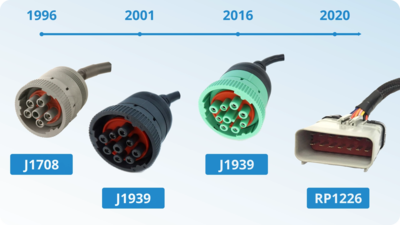The ELD (electronic logging device) has changed the way drivers keep their RODS (records of duty status). With the implementation of these devices, many new drivers just trust the app or device to tell them how much they can drive or when they're supposed to stop. That being said, it is still important to understand the 70-hour 8-day HOS ruleset in case the device fails or malfunctions. When this happens a driver would temporarily be required to use the backup paper logs. In this blog post, we will provide an in-depth explanation of this ruleset, so that you can stay compliant and make more money by managing your fleet effectively.
Why the 70-hour/8-day ELD HOS ruleset?
The 70-hour/8-day ruleset is by far the most commonly used Hours of Service (HOS) ruleset in the trucking industry. It was created to ensure that drivers are operating their vehicles safely and with appropriate rest periods, as mandated by the Federal Motor Carrier Safety Administration (FMCSA). It also allows for the most working time when compared to the 60-hour/7-day ruleset. The FMCSA makes regular updates to HOS rules, and it is the responsibility of every fleet manager and individual driver to ensure compliance.
What is the 70-hour/8-day limit?
The 70-hour 8-day rule is also commonly referred to as the 70/8 rule, the 8 70 rule, or the 70-hour 8-day rule. Simply put it's the maximum amount of working hours allowed (70) in a consecutive 8-day period.
Keep in mind that working hours include drive time and on duty time. Also, days are counted on a rolling day-to-day basis so any hours from 9 days ago would not count. Now, let's assume a driver was home over the weekend and is looking to start first thing Monday. They would have a fresh (or full) clock, and the current day is the newest day for every driver. Let's now go over how drive, on duty, off duty and sleeper time affect this clock:
- Drive time
Monday rolls around and this driver gets to work and drives for 8 hours. The clock would count down, so 8 hours gets subtracted from 70 and gives us 62 hours left for the remaining days. The maximum number of hours allowed for drive time in a single day is 11. The key here, though, is that 11 hours max drive time can NOT take longer than 14 hours to complete. For example, you can NOT drive for 5 hours, wait for 5 hours while getting unloaded and then drive for another 6 to get to 11. When you add up that shift, 5 hours driving plus 5 hours waiting plus 6 hours of driving is 16 hours. This means that the driver would be in violation since they are over by 2 hours.
- On Duty time
This is where drivers and fleet managers need to pay attention. On Duty time is defined as any time spent on or around the truck working, loading, inspecting or unloading. So even though our driver drove for 8 hours on Monday, let's say he also did a 15-minute pre trip inspection and it took him 45 minutes to get fuel-- both of which are considered on duty time. This now means that instead of 62 hours remaining, he would actually only have 61 accounting for the inspection and unloading times.
- Off Duty & Sleeper time
It's now the end of the day and our driver would like to get some rest. If their truck is equipped with a sleeper, they must log 10 hours in the sleeper before they can start work again. Alternatively, if the driver's truck is not equipped with a sleeper and they are staying at home or a hotel they must log 10 hours off duty before starting their shift the next day. There are several exemptions to this that we won't dive into in this blog post. If you'd like to learn more about these specific exemptions, we recommend taking a look at the FMCSA website.
The Do-It-All Fleet Management Platform.
Start Today, No Contract. No CC.
Penalties
HOS rules apply to most drivers in the commercial sector and any business in an industry that manages a set of company vehicles. Violations can be costly on multiple levels. Individual fines tend to range from $500 to $17,000. However, in cases carrying hazardous materials, penalties can exceed $70,000.
Interruptions to logistics can also be costly, as can the impact on successful delivery and customer service. For example, if a truck gets shut down for an HOS violation, it can be stuck roadside until the driver clocks enough off-duty time to resume driving – which could be anywhere from 10-34 hours.
Worried about the complexity of the 70-hour 8-day rule or other HOS regulations and how to comply? TruckSpy can help you ensure DOT compliance. Click here to start the conversation.
Recent Blogs
by Elyse Byers
July 5, 2024




